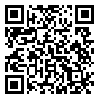Volume 25, Issue 3 (10-2019)
Back to this Issue |
Back to browse issues page
Download citation:
BibTeX | RIS | EndNote | Medlars | ProCite | Reference Manager | RefWorks
Send citation to:



BibTeX | RIS | EndNote | Medlars | ProCite | Reference Manager | RefWorks
Send citation to:
Dorri S, Hakimi H, Rafii F, Ashghali Farahani M, Mohammadi H. Concept of active aging in diabetics: A qualitative article
. Journal of Hayat 2019; 25 (3) :325-341
URL: http://hayat.tums.ac.ir/article-1-3133-en.html
URL: http://hayat.tums.ac.ir/article-1-3133-en.html
Safoura Dorri1 

 , Hamideh Hakimi2
, Hamideh Hakimi2 

 , Forough Rafii3
, Forough Rafii3 

 , Mansoureh Ashghali Farahani *
, Mansoureh Ashghali Farahani * 

 4, Hossein Mohammadi5
4, Hossein Mohammadi5 




 , Hamideh Hakimi2
, Hamideh Hakimi2 

 , Forough Rafii3
, Forough Rafii3 

 , Mansoureh Ashghali Farahani *
, Mansoureh Ashghali Farahani * 

 4, Hossein Mohammadi5
4, Hossein Mohammadi5 


1- Dept. of Medical Surgical Nursing, School of Nursing and Midwifery, Iran University of Medical Sciences, Tehran, Iran; Student Research Committee, Iran University of Medical Sciences, Tehran, Iran
2- Dept. of Pediatric Nursing, Islamic Azad University of Lahijan, Lahijan, Iran
3- Dept. of Medical Surgical Nursing, School of Nursing and Midwifery, Iran University of Medical Sciences, Tehran, Iran; Nursing Care Research Center (NCRC), Iran University of Medical Sciences, Tehran, Iran
4- Dept. of Medical Surgical Nursing, School of Nursing and Midwifery, Iran University of Medical Sciences, Tehran, Iran; Nursing Care Research Center (NCRC), Iran University of Medical Sciences, Tehran, Iran ,Farahani.ma@iums.ac.ir
5- Dept. of Geriatric Nursing, School of Nursing and Midwifery, Iran University of Medical Sciences, Tehran, Iran
2- Dept. of Pediatric Nursing, Islamic Azad University of Lahijan, Lahijan, Iran
3- Dept. of Medical Surgical Nursing, School of Nursing and Midwifery, Iran University of Medical Sciences, Tehran, Iran; Nursing Care Research Center (NCRC), Iran University of Medical Sciences, Tehran, Iran
4- Dept. of Medical Surgical Nursing, School of Nursing and Midwifery, Iran University of Medical Sciences, Tehran, Iran; Nursing Care Research Center (NCRC), Iran University of Medical Sciences, Tehran, Iran ,
5- Dept. of Geriatric Nursing, School of Nursing and Midwifery, Iran University of Medical Sciences, Tehran, Iran
Abstract: (4609 Views)
Background & Aim: Iranian elderly population is increasing, and a high percentage of this population suffers from diabetes. Considering that the concept of active aging has not been developed in the context of chronic diseases that are common in aging (such as diabetes), the purpose of this study was to analyze the concept of active aging in diabetic elderly patients based on a hybrid model.
Methods & Materials: Three stages of hybrid model (theoretical, field work and final analysis) were used in this study. In the theoretical phase, 35 articles (published in 1990-2016) from scientific databases were analyzed. In the field work phase, 10 participants were interviewed and then a qualitative content analysis was performed. In the final phase, the findings of the two previous stages were merged and analyzed.
Results: The definition of active aging for the diabetic elderly is a comprehensive, dynamic, multidimensional and culturally dependent process that requires a sense of satisfaction, happiness, well-being, security, and physical and mental health, that is achieved through social participation, providence of appropriate health and employment services, awareness of diabetes, and financial, emotional, family, and governmental support that brings subjective and objective benefits to the international, national and individual levels (such as adaptation to illness, a sense of worth and self-esteem). In order to achieve this, paying attention to the whole life span from childhood to old age is needed.
Conclusion: The results of this study suggest that health, security, satisfaction, participation, access to health services, support and knowledge of diabetes play an important role in activating elderly people with diabetes in Iran.
Methods & Materials: Three stages of hybrid model (theoretical, field work and final analysis) were used in this study. In the theoretical phase, 35 articles (published in 1990-2016) from scientific databases were analyzed. In the field work phase, 10 participants were interviewed and then a qualitative content analysis was performed. In the final phase, the findings of the two previous stages were merged and analyzed.
Results: The definition of active aging for the diabetic elderly is a comprehensive, dynamic, multidimensional and culturally dependent process that requires a sense of satisfaction, happiness, well-being, security, and physical and mental health, that is achieved through social participation, providence of appropriate health and employment services, awareness of diabetes, and financial, emotional, family, and governmental support that brings subjective and objective benefits to the international, national and individual levels (such as adaptation to illness, a sense of worth and self-esteem). In order to achieve this, paying attention to the whole life span from childhood to old age is needed.
Conclusion: The results of this study suggest that health, security, satisfaction, participation, access to health services, support and knowledge of diabetes play an important role in activating elderly people with diabetes in Iran.
Send email to the article author
| Rights and permissions | |
 |
This work is licensed under a Creative Commons Attribution-NonCommercial 4.0 International License. |



